Saving Jamaica Bay
Local Documentary Film At The Queens World Film Festival
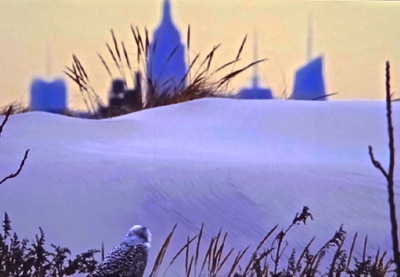 March 21, 2016 / Jamaica Neighborhood / NYC Environment & Health / Gotham Buzz NYC.
March 21, 2016 / Jamaica Neighborhood / NYC Environment & Health / Gotham Buzz NYC.
I attended the 6th annual Queens World Film Festival on Thursday where I had an opportunity to view a film that's been years in the making by a local filmmaker, Dan Hendrick. The film is entitled Saving Jamaica Bay and it's an hour and 16 minute documentary about the ecosystem of New York City's Jamaica Bay.
The film storyline and cinematography capture the juxtaposition and the intensifying struggle, between man and nature. The beauty of the bay is captured on film, showing us that the fair maiden is in distress. But she's being rescued, or at least fought for, by a naturalist and former manager of the National Park Service Jamaica Bay Wildlife Refuge in tandem with a retired fireman and his son, who've taken upon themselves the mission of protecting what was shown to us to be an area of great urban abuse and refuse, but even greater beauty.
Click here to see more still photos and a review of the film entitled Saving Jamaica Bay at the Queens World Film Festival in March. The film is scheduled to be shown at other film festivals throughout the year, a few of which will be listed at the end of this report.
Saving Jamaica Bay
Local Documentary Film At The Queens World Film Festival
March 21, 2016 / Jamaica Neighborhood / NYC Environment & Health / Gotham Buzz NYC. Continued.
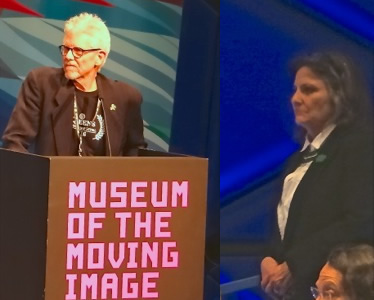 I arrived on time to see the 8.15 pm showing of the Queens World Film Festival [QWFF] program entitled How Green is my Garden. This particular program of the Queens World Film Festival included two films - an eleven-minute short entitled Christopher's Garden by William Torgerson, and a 76 minute documentary entitled Saving Jamaica Bay by Queens film maker Dan Hendrick. The programs are curated by Queens World Film Festival co-Founder Don Cato [see photo at right].
I arrived on time to see the 8.15 pm showing of the Queens World Film Festival [QWFF] program entitled How Green is my Garden. This particular program of the Queens World Film Festival included two films - an eleven-minute short entitled Christopher's Garden by William Torgerson, and a 76 minute documentary entitled Saving Jamaica Bay by Queens film maker Dan Hendrick. The programs are curated by Queens World Film Festival co-Founder Don Cato [see photo at right].
The Catos Introduce Queens World Film Festival Program
Prior to the film screening, Queens World Film Festival co-Founder, Katha Cato [see photo at right], made a few remarks about the composition of the films in the Queens World Film Festival being shown at four Queens locations including Astoria, Long Island City, Sunnyside and Jackson Heights. I've included excerpts from those remarks at the end of this report, which outline the depth and breadth of the Queens World Film Festival offerings, as well as its efforts to nurture and showcase local film making talent.
How Green is My Garden Program Features Christopher's Garden
Christopher's Garden chronicled the work of an artist / farmer who opened up his private yard space to the public as a quasi-public garden. The film was a journey of sorts, into Christopher's Garden which appears to be an actualization ofChristopher's spiritual,philosophical and gardening self. It was a nice warm up to Saving Jamaica Bay, as it eased us back into the comfortable chairs at the Museum of the Moving Image, and left us with a zen-like feeling.
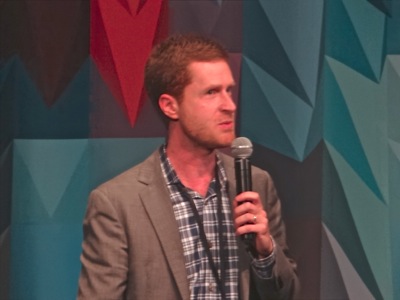
Saving Jamaica Bay
Documentary Film by Dan Hendrick
Saving Jamaica Bay was next on tap and the documentary film opens with a number of beautiful, sweeping vistas of the paradise and the dumping pile that we know as Jamaica Bay. Off we went on a journey into an area at the southern edge of Queens and Brooklyn that includes fresh water, wetlands, marshes, salt water, beaches and rain forest-like abundance of species of wildlife.
Saving Jamaica Bay captures the tension of modern life, the yin and the yang, the dot within the whole, the public good versus the private profiteering, the natural beauty and the man-made trash, and one might even go so far as to say the struggle between life and death.
Explores the Struggle between Man & Nature over Preservation of our Ecosystem
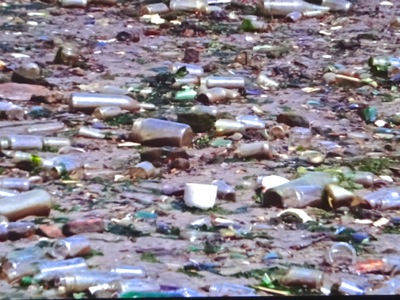 The last phrase is a philosophical one, begging the question we must ask of ourselves as the ruling planetary species,
The last phrase is a philosophical one, begging the question we must ask of ourselves as the ruling planetary species,
"If we don't begin conforming to nature's way or nature's laws - which require holistic, cyclical, regenerative processes - how long before we go the way of the dinosaur?"
For us to survive on the bone dry, oxygen-less Moon or Mars, we would have to develop our own man-made ecology built in accordance with nature's regenerative ways. Which leads me to contemplate that if we continue on the path we're now on, we may eventually have to do that here on Earth. And places like Jamaica Bay ... real natural paradises ... would be gone forever. But I digress [click here for related fictional short story about climate change].
Meet Jamaica Bay Eco-activists: Don Riepe & Dan Mundy Jr. & Sr.
 In the film, Saving Jamaica Bay, we met several local eco-activists whose interest in Jamaica Bay arose from living there. The three primary characters in the documentary are Don Riepe of the Jamaica Bay Wildlife Refuge and the Mundys - a father and son team comprised of a former and a current NYFD fireman [see photo at right - as they attended the QWFF premiere]. The Mundys joined Riepe [pronounced Reep] to help make the people and the government aware of a rapidly deteriorating eco-system that is home to numerous species of flora, fauna and aquatic life.
In the film, Saving Jamaica Bay, we met several local eco-activists whose interest in Jamaica Bay arose from living there. The three primary characters in the documentary are Don Riepe of the Jamaica Bay Wildlife Refuge and the Mundys - a father and son team comprised of a former and a current NYFD fireman [see photo at right - as they attended the QWFF premiere]. The Mundys joined Riepe [pronounced Reep] to help make the people and the government aware of a rapidly deteriorating eco-system that is home to numerous species of flora, fauna and aquatic life.
The three men who become the protagonists in this film were self-selected and self-organized. They were residents of Broad Channel [the only inhabited island in Jamaica Bay] who noticed a rapidly changing ecology in the bay and they took it upon themselves to do something about it. In the process a concern and an interest, and over the course of time, became something like a life mission. One might call them the Paul Reveres of Jamaica Bay, who instead of shouting,
"The British are coming. The British are coming."
Began spreading the word that,
"The Marshes are dying. The Marshes are dying."
Dan Hendrick finds a Way to Help Save Jamaica Bay thru Storytelling
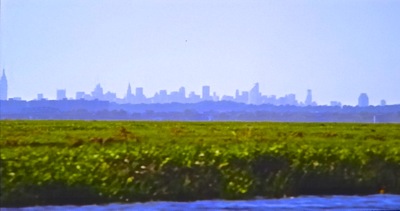 Enter film producer, Dan Hendrick, of Grounded Truth Productions, who first met Riepe & the Mundys while covering events in southern Queens as a journalist for one of the local Queens newspapers [Queens Chronicle]. Their passion, in time, became his passion, and so Dan began contributing to the conservation effort the best way he knew how ... through story telling.
Enter film producer, Dan Hendrick, of Grounded Truth Productions, who first met Riepe & the Mundys while covering events in southern Queens as a journalist for one of the local Queens newspapers [Queens Chronicle]. Their passion, in time, became his passion, and so Dan began contributing to the conservation effort the best way he knew how ... through story telling.
Hendrick spent five years creating this film. Like the other characters of this documentary, Dan's interest in making the film, arose from his interest in Jamaica Bay. Over the years Hendrick collected and then crafted a holistic look at Jamaica Bay and its many issues.
Jamaica Bay History Begins After the Civil War
In Saving Jamaica Bay, Hendrick includes some of the history of the bay, referring back to an area of Jamaica Bay once used to dump 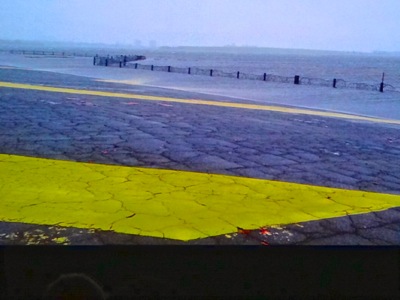 the carcasses of dead horses. This practice was prevalent in the latter half of the 19th century [1800's], when horses were still one of the leading forms of transportation. The area of Jamaica Bay where the horses were dumped is still called Dead Horse Bay, and it's located just east of Floyd Bennett Field in Brooklyn.
the carcasses of dead horses. This practice was prevalent in the latter half of the 19th century [1800's], when horses were still one of the leading forms of transportation. The area of Jamaica Bay where the horses were dumped is still called Dead Horse Bay, and it's located just east of Floyd Bennett Field in Brooklyn.
Floyd Bennett Airfield & Jamaica Bay
Jamaica Bay history isn't complete without talking about the emergence of air travel. Floyd Bennett Field was the first airport of New York City and it was located along the northwest edge of Jamaica Bay. The first trans-Atlantic flight departed from Naval Air Station Rockaway in Queens in 1919. And prior to Lindbergh's historic flight, blimps were floated above New York City during World War I to protect the city from airborne threats.
Floyd Bennett Field was replaced by a more conveniently located LaGuardia Airport in the mid 1930's. But it wasn't long before New York City required even more airport capacity and in the early 1960's JFK Airport was built in Queens only a couple miles west of Floyd Bennett Airfield, and also along the perimeter of Jamaica Bay.
JFK Airport & Jamaica Bay - Expansion vs Ecology
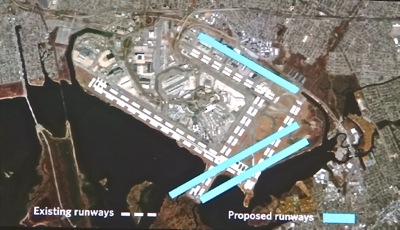 Today JFK is New York City's largest airport and it's looking to expand, citing capacity constraints. As a modern industrial air transportation hub - JFK Airport is seeking to add runways and some of the recent expansion proposals appear to be detrimental to the eco-system of Jamaica Bay. But this isn't the worst of it.
Today JFK is New York City's largest airport and it's looking to expand, citing capacity constraints. As a modern industrial air transportation hub - JFK Airport is seeking to add runways and some of the recent expansion proposals appear to be detrimental to the eco-system of Jamaica Bay. But this isn't the worst of it.
Beginning in the mid 1990's [1995 - 1996] Jamaica Bay began losing marshland at a rapid rate. With the marsh losses, the numerous species that relied on marshland for survival, began disappearing. And if I heard correctly, Jamaica Bay is home to as many or possibly more species than currently exist in the Adirondacks [eg. more than 330 bird species have been recorded at Jamaica Bay]. It's ironic that the marsh losses are coming today from some as-of-yet unidentified cause, when not long ago Jamaica Bay was the home to four landfills, which began in the 19th century, and only ended in the 1990's. Things got so bad, that at one point, some folks referred to it as garbage bay.
Queens Broad Channel Island at Sea Level in the Bay
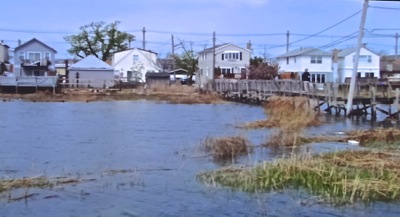 As mentioned previously, Hendrick found the film protagonists living on the Queens island of Broad Channel, the only inhabited island in Jamaica Bay. The island is located at sea level, and on a periodic basis, the inhabitants of Broad Channel adjust to pools of water entering their homes. They've made adjustments over the years by locating electrical, heating and cooling equipment and wiring at elevated levels within their homes, so that it's not damaged by high waters.
As mentioned previously, Hendrick found the film protagonists living on the Queens island of Broad Channel, the only inhabited island in Jamaica Bay. The island is located at sea level, and on a periodic basis, the inhabitants of Broad Channel adjust to pools of water entering their homes. They've made adjustments over the years by locating electrical, heating and cooling equipment and wiring at elevated levels within their homes, so that it's not damaged by high waters.
The offset of this great natural inconvenience is that the Broad Channel residents live amidst great natural beauty. Hendrick captured the beauty and some of the unusual, quirky, wildlife characters that share living in Jamaica Bay with the Broach Channel residents. Hendrick's storyline and the Saving Jamaica Bay cinematography is sure to win the hearts of many viewers, and in the process has the potential to further the effort of Saving Jamaica Bay.
Jamaica Bay is a Part of the Gateway National Recreation Area
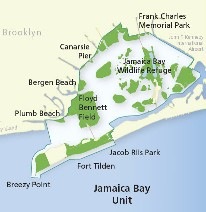 According to Wikipedia, Jamaica Bay covers a large area, some 25,000 acres, which is the equivalent of nearly 30 Central Parks [843 acres]. It's a nutrient rich ecosystem which is home to many species of turtles, snakes, birds, oysters, clams and all kinds of aquatic and plant life.
According to Wikipedia, Jamaica Bay covers a large area, some 25,000 acres, which is the equivalent of nearly 30 Central Parks [843 acres]. It's a nutrient rich ecosystem which is home to many species of turtles, snakes, birds, oysters, clams and all kinds of aquatic and plant life.
Hendrick uses his film, Saving Jamaica Bay, to take us on an intermittent National Geographic-like tour of Jamaica Bay, through vignettes filmed over the course of the five years this film was in the making. Hendrick told me that Director David Sigal shot most of the film, that Hendrick had shot a portion of it and that some of the film crew, and folks like Riepe, the Mundys, and others contributed the rest.
Meet Igor, a Bona Fide Member of the Jamaica Bay Ecosystem
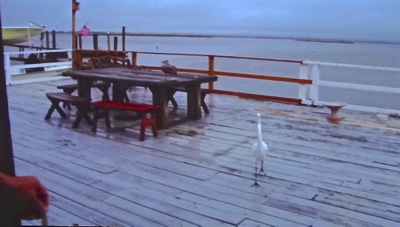 In one of the scenes, Hendrick, with the help of Riepe, captures some of the human-like characters who drop in for a kitchen visit which includes a quick conversation, rewarded by a bite to eat. I'm talking about Igor, who you'll get to know better if and when you see the film.
In one of the scenes, Hendrick, with the help of Riepe, captures some of the human-like characters who drop in for a kitchen visit which includes a quick conversation, rewarded by a bite to eat. I'm talking about Igor, who you'll get to know better if and when you see the film.
The human history of Jamaica Bay begins following the Civil War, when residents were looking to escape the big city. By the late 19th century beach resort hotels lined the Rockaways, ferries steamed to and fro New York City, and fresh clams and oysters satisfied feasting fellows. A rail track was built to make visiting Jamaica Bay and the Rockaways more convenient. But storms and hurricanes were always a part of the landscape, causing incredible losses and destruction, and eventually some measure of abandonment by the general populace by the middle of the 20th century.
As mentioned above, in the mid 1990's, Riepe and the Mundys began noticing rapid erosion of the marshes. They became concerned and began documenting the changes with photos and maps. With the marsh losses there were related eco-system losses, as Jamaica Bay is comparable to a rain forest for its bountiful wildlife, but also fragile ecology.
Saving Jamaica Bay Film Cinematography
The exploration of real nature so close to the city has not gone unnoticed and school groups have begun booking visits to Jamaica Bay to give their students a chance to observe wildlife in nature. Hendrick included some footage showing a snapper turtle taking down a duck in the marshland. It's not just a dog-eat-dog world, but in Jamaica Bay it's also a turtle-eat-duck world too - so beware.
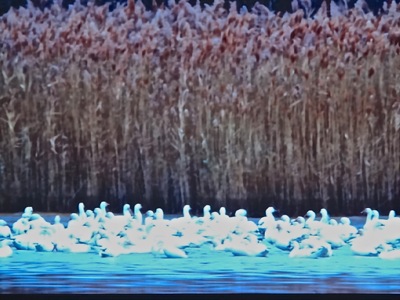 The beauty of the bay is shown through the seasons. The inherent stillness of the bay in winter is captured on film, as is the busy season when the birds are migrating north and south and take a pit stop in Jamaica Bay. Hendrick through Riepe and Mundy introduces us to some of the habitat issues faced by some of the resident fowls.
The beauty of the bay is shown through the seasons. The inherent stillness of the bay in winter is captured on film, as is the busy season when the birds are migrating north and south and take a pit stop in Jamaica Bay. Hendrick through Riepe and Mundy introduces us to some of the habitat issues faced by some of the resident fowls.
The osprey had all but abandoned Jamaica Bay a couple of decades ago, due to the significant levels of chemical pollution that nearly destroyed their food supply. *****
The osprey are sea hawks and they only eat fish. The Jamaica Bay waters were put under the protection of the Gateway National Recreation Area in 1972 and as the water began improving, the sea hawks began returning.
The diamondback terrapins are another group that nearly vacated the marshes of Jamaica Bay because all of their eggs were being eaten by raccoons. But then the raccoons left because the bay had become so polluted and they had eliminated their food source. Again, due to environmental / conservationist efforts, the terrapins have returned.
Of course the star of the show from a wildlife point of view was Igor, who I mentioned and introduced you to earlier in this report.
Non-profits, School Groups & Community Organizations Show Interest in Helping
While school groups have taken up visiting the bay to treat their students to a day trip in the wild, other groups have also begun taking an interest in doing what they can to help save Jamaica Bay. Riepe told about how several community and non-profit groups have contacted him [he's the Northeast Director of the American Littoral Society] to organize clean ups. Saving Jamaica Bay captured one such effort, which we were told resulted in filling 13 dumpsters of crapola left by prior generations.
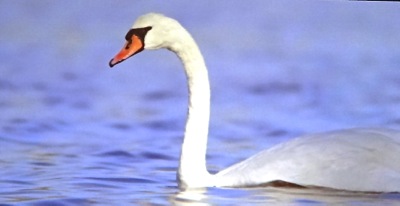 Jamaica Bay is a lot like Cinderella - a great beauty hidden by wash pails, garbage and tattered clothing. But even underneath all of that, her great beauty is recognizable by the Princes and Princesses who have come to her aid.
Jamaica Bay is a lot like Cinderella - a great beauty hidden by wash pails, garbage and tattered clothing. But even underneath all of that, her great beauty is recognizable by the Princes and Princesses who have come to her aid.
Glass slippers? No. It's more like removing ancient beer bottles.
In one such case a Hindu group started using Jamaica Bay to celebrate Ganga Puja, a waterside ritual rooted in ancient Indian traditions. Nearby Richmond Hill is home to a number of south Asian peoples, so these types of collaborations strengthen the communal bond and the bond with nature. As part of their celebration, they clean up the area before they depart.
Ecological Crisis: Eroding Marshlands in Jamaica Bay
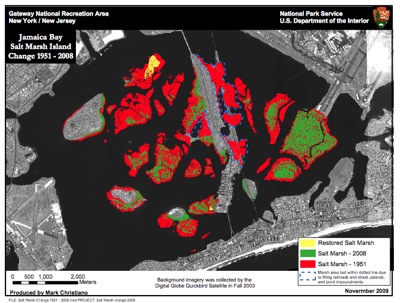 The thrust of the film is about the Jamaica Bay ecology and the current threat of eroding marshlands. The Mundys starting taking note of the marshland erosion in the mid 1990's when Riepe and the Mundys started documenting it.
The thrust of the film is about the Jamaica Bay ecology and the current threat of eroding marshlands. The Mundys starting taking note of the marshland erosion in the mid 1990's when Riepe and the Mundys started documenting it.
The Army Corps of Engineers had been using satellite photos to track the erosion as early as 1951 [see photo at right from National Park Service]. The Mundys and Riepe met with New York State Department of Environmental Conservation [DEC] and showed them their photos and maps and together they compared notes. The DEC concluded that the erosion was happening faster than they previously thought. And they validated the multi-year efforts made by these valiant Queens and Jamaica Bay community eco-activists.
A Jamaica Bay Task Force was formed and at some point the National Parks Service and local agencies began rebuilding the marshes. To date the new marshes are doing well, but the old marshes are still dying. Marshes and other natural configurations were called 'soft infrastructure' in the film as they mitigate storm damage.
Hurricane Sandy & Hurricanes in Jamaica Bay
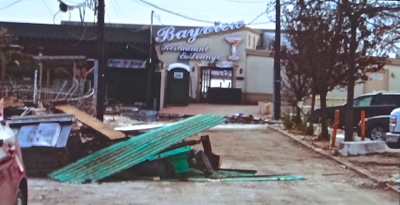 Hurricane Sandy hit while they were filming. Part of the saga of dealing with a hurricane was included in the film, showing the evacuation preparation, evacuation and return. Dealing with hurricanes is a part of life for those who live in Broad Channel, as Gloria [1985], storms in 1991, 1992 and about three in this decade too.
Hurricane Sandy hit while they were filming. Part of the saga of dealing with a hurricane was included in the film, showing the evacuation preparation, evacuation and return. Dealing with hurricanes is a part of life for those who live in Broad Channel, as Gloria [1985], storms in 1991, 1992 and about three in this decade too.
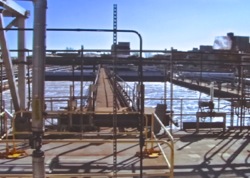 In another battle, Riepe, Mundy in tandem with others threatened to sue the city using the Clean Water Act, which enables communities and residents to use the courts to require the government to do their job and to protect the air we breathe and the water we drink. The Bloomberg Administration met with them and after several rounds of negotiations, made an 11th hour concession to making changes at the Brooklyn 26th Ward Waste Water Treatment plant which reduced the toxic levels of nitrogen flowing into the marshes. This was a victory for the Don Quixotes of Dan's story, as well as for the Broad Channel community and Jamaica Bay.
In another battle, Riepe, Mundy in tandem with others threatened to sue the city using the Clean Water Act, which enables communities and residents to use the courts to require the government to do their job and to protect the air we breathe and the water we drink. The Bloomberg Administration met with them and after several rounds of negotiations, made an 11th hour concession to making changes at the Brooklyn 26th Ward Waste Water Treatment plant which reduced the toxic levels of nitrogen flowing into the marshes. This was a victory for the Don Quixotes of Dan's story, as well as for the Broad Channel community and Jamaica Bay.
JFK Airport Proposes Expansion into Jamaica Bay
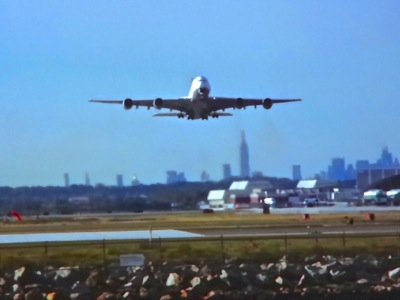 But the threats to Jamaica Bay haven't been vanquished by any means. The RPA, FAA and PA [also known as the Regional Plan Association, the Federal Aviation Administration and the Port Authority] are discussing proposals to build new runways right into Jamaica Bay. RPA's report on this plan contained numerous flaws and it's possible the most flawed proposal has been sidelined, but the initiative and the effort to expand JFK Airport have not.
But the threats to Jamaica Bay haven't been vanquished by any means. The RPA, FAA and PA [also known as the Regional Plan Association, the Federal Aviation Administration and the Port Authority] are discussing proposals to build new runways right into Jamaica Bay. RPA's report on this plan contained numerous flaws and it's possible the most flawed proposal has been sidelined, but the initiative and the effort to expand JFK Airport have not.
Ironically, it was this proposal that got filmmaker Dan Hendrick on his horse, as he challenged himself to make a contribution to the effort to save Jamaica Bay. So along with Riepe, the Mundys, other Broad Channel residents and a growing number of conservation groups [Littoral Society, Audubon Society] and agencies [Environmental Protection Agency] they are galloping toward windmills or rather airplanes in an effort to save from extinction a small part of paradise: Jamaica Bay.
Saving Jamaica Bay & the Queens World Film Festival
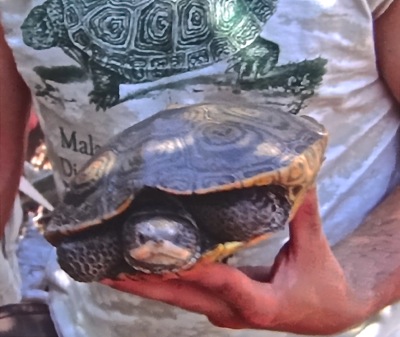 Saving Jamaica Bay is an important film because of the important message it carries, and the graceful delivery and beauty of the messenger. Susan Sarandon donated her time to narrating the film, which she made seem effortless because it was done so well.
Saving Jamaica Bay is an important film because of the important message it carries, and the graceful delivery and beauty of the messenger. Susan Sarandon donated her time to narrating the film, which she made seem effortless because it was done so well.
And the Queens World Film Festival showcased not only an important documentary made by a local filmmaker, but like the film itself, helped draw attention to the lady in distress - Jamaica Bay. I've traveled through Broad Channel on my way to the Rockaways, but never stopped. Having seen this movie, I plan to correct that sometime in the near future.
Institutions & Organizations thru which you can visit Jamaica Bay
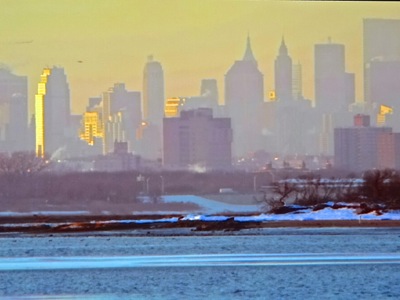 Dan Hendrick told me that there are several venues through which to see Jamaica Bay including those already mentioned including the Littoral Society for which Riepe is a Director, as well as the Jamaica Bay Wildlife Refuge which is on Broad Channel island in Jamaica Bay, and he also mentioned the Ryan Visitors Center at Floyd Bennett Field which was named after the Congressman who helped put the bay under federal jurisdiction.
Dan Hendrick told me that there are several venues through which to see Jamaica Bay including those already mentioned including the Littoral Society for which Riepe is a Director, as well as the Jamaica Bay Wildlife Refuge which is on Broad Channel island in Jamaica Bay, and he also mentioned the Ryan Visitors Center at Floyd Bennett Field which was named after the Congressman who helped put the bay under federal jurisdiction.
I have included a couple of maps taken from the National Park Service which show the salt marsh erosion from 1951 - 2008. The National Park Service refers to Jamaica Bay as the Gateway National Recreation Area and I found these under 'maps'.
Saving Jamaica Bay - Future Showings
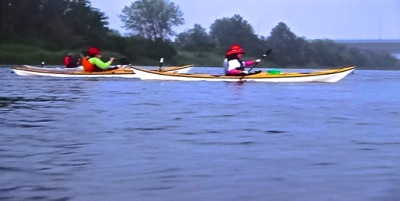 Saving Jamaica Bay will be shown at film festivals around the nation in 2016 including:
Saving Jamaica Bay will be shown at film festivals around the nation in 2016 including:
- March 24 at 6:30 pm - DC Environmental Film Festival - Washington, DC
- April 7 at 7 pm - Princeton Environmental Film Festival - Princeton, NJ
- April 10 at 4 p.m., April 12 at 4 pm - Palm Beach International Film Festival - Palm Beach, FL
- April 14 at 9.25 am - John Jay College / Eco Cinema Festival at 524 W 59th St, New York, NY 10019
- The film will also appear at the Bershire International Film Festival in June.
- The Wildlife Conservation Film Festival, which will take place sometime this summer in New York City.
The production company is Grounded Truth Productions and future film showings are listed at www.savingjamaicabay.com.
Queens World Film Festival Nurtures Local Film Talent
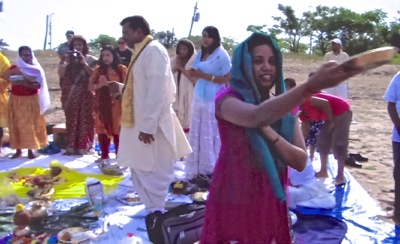 The Queens World Film Festival is in its sixth year and this year presented 144 films. About 71 of the films submitted were created by Queens-based producers, of which 29 of them were shown in the festival this year.
The Queens World Film Festival is in its sixth year and this year presented 144 films. About 71 of the films submitted were created by Queens-based producers, of which 29 of them were shown in the festival this year.
QWFF Provides Women and Foreign Filmmakers with an NYC Venue
A bit less than half of the films were created by women, which is far higher percentage / representation than the film festival industry average, which if my memory serves me correctly we were told is in the high single digits or low double digits [% percent by women]. Also this year, 22 of the films came from other nations. The films were grouped thematically into program blocks which this year included: 1) the planet, 2) children, 3) women and 4) green / environmental. You can learn more about the Queens World Film Festival at www.queensworldfilmfestival.com.
Queens World Film Festival - Technicians Behind the Scenes
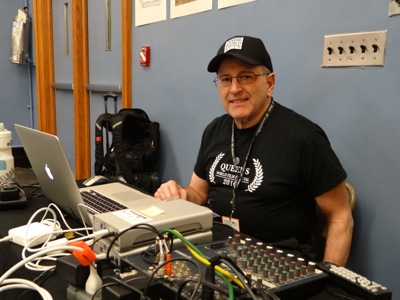 This year I went behind the Wizard of Oz curtain to talk to one of the technicians about the important behind-the-scenes role they play in the festival. Sam Berland has been with the Queens World Film Festival since its inception, helping order the rental equipment for the festival, building the play lists used at each location and standardizing the sound tracks of the films for the play lists as they vary with each film submission.
This year I went behind the Wizard of Oz curtain to talk to one of the technicians about the important behind-the-scenes role they play in the festival. Sam Berland has been with the Queens World Film Festival since its inception, helping order the rental equipment for the festival, building the play lists used at each location and standardizing the sound tracks of the films for the play lists as they vary with each film submission.
The photo at right shows Sam in action at PS 69 in Jackson Heights on Wednesday, March 16th. Sam is also a technician for the Tribeca Film Festival which begins in the middle of next month.
Queens Buzz Voluntary Subscriptions
We do our best to provide independent coverage of news, dining, events, arts & culture.
 You can help us continue providing you with first source, balanced, contextual and independent coverage of Queens by making a voluntary subscription donation for as little as $5 [less than the price of one copy of a print magazine].
You can help us continue providing you with first source, balanced, contextual and independent coverage of Queens by making a voluntary subscription donation for as little as $5 [less than the price of one copy of a print magazine].
Click the button for details on how you can help us continue providing this sort of reporting.
Queens Neighborhood Links
Click on these advertisements for promotions, discounts and coupons by retailers and restaurateurs in nearby Queens.
Click this link to go to QueensBuzz.com.
LIC Neighborhood - Long Island City Links
Click on these advertisements for promotions, discounts and coupons by retailers and restaurateurs in nearby Queens.
Site Search Tips. 1) For best results, when typing in more than one word, use quotation marks - eg "Astoria Park". 2) Also try either singular or plural words when searching for a specific item such as "gym" or "gyms".
$element(bwcore,insert_search,N)$
Click this link to search for something in our Queens Business Directory.
$element(adman,groupad,Sectional2 Ad)$
Click the log in link below to create an ID and post an opinion.
Or send this story to a friend by filling in the appropriate box below.













